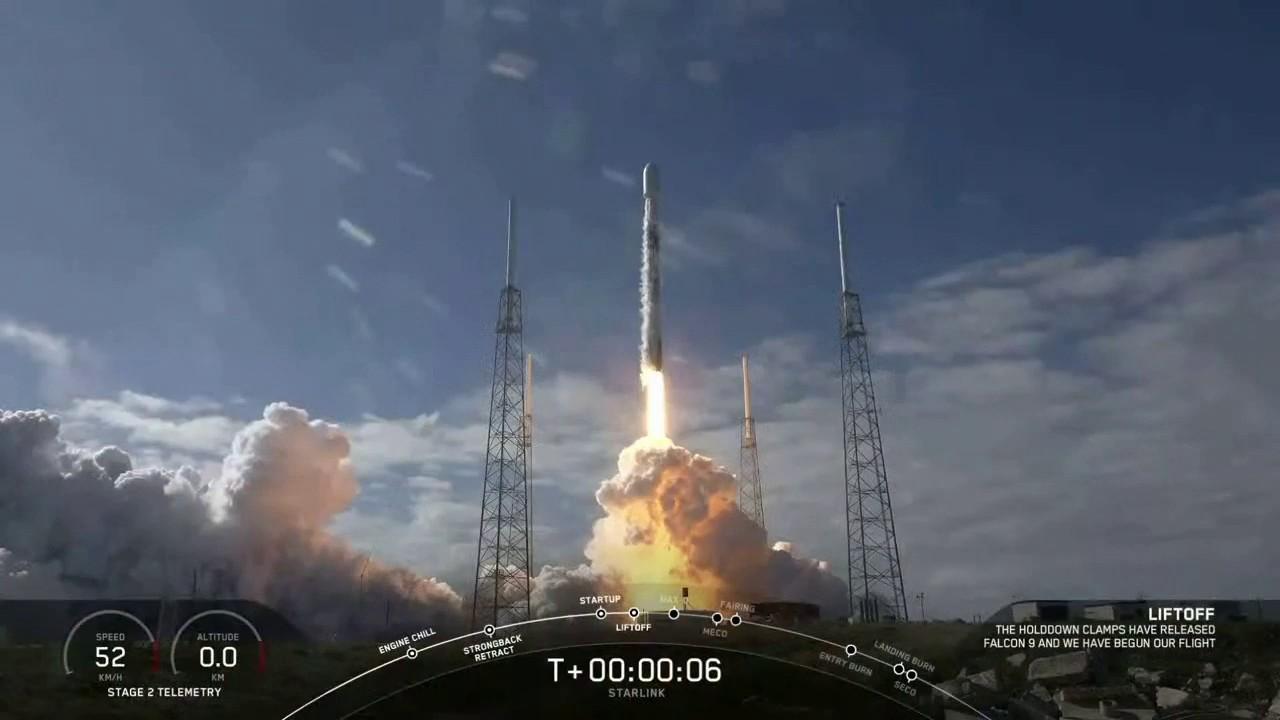Why is Elon Musk launching so many satellites into space?
The SpaceX project is called Starlink; Will provide global internet access
SpaceX founder Elon Musk first announced a plan to launch thousands of satellites into space in 2015 as part of a broadband internet service project called Starlink.
Musk initiated the project "to deploy the world's most advanced broadband internet system," according to SpaceX's Starlink website.
"With performance that far surpasses that of traditional satellite internet, and a global network unbounded by ground infrastructure limitations, Starlink will deliver high speed broadband internet to locations where access has been unreliable, expensive, or completely unavailable," the site reads.
Musk has received formal approval from the Federal Communications Commission to launch 12,000 satellites into orbit and submitted paperwork for another 30,000 in December 2019.
SapceX currently has about 350 Starlink satellites orbiting Earth. The company said it planned to launch about two dozen batches that each contain 60 Starlink satellites this year, according to Space.com.
SPACEX'S 20TH STATION SHIPMENT ARRIVES WITH CANDY, SCIENCE
About 400 Starlinks will get the broadband service up and running, though SpaceX CEO Elon Musk, got “service” started on a small scale in October when he tweeted through an internet connection provided by that first batch of satellites
But Musk’s pet project will need more devices orbiting to see this plan become a full-fledged internet provider. SpaceX has said 1,584 satellites will be needed for the Starlink system.
Musk successfully launched his latest batch of 60 satellites into orbit in March. The satellites were put into orbit by SpaceX's Falcon 9 rocket, which missed its landing target due to "an early engine shutdown on ascent" that did not affect the satellite launch, the billionaire engineer tweeted on March 18.
SPACEX LAUNCHES STATION SUPPLIES, NAILS 50TH ROCKET LANDING
"Thorough investigation needed before next mission," the tweet continued. The next Starlink launch was set for April but has since been pushed back because of the coronavirus pandemic.
The satellites meet or exceed industry standards in regard to orbit debris mitigation, the Starlink websites reads.
When the satellites reach expiration, they will "utilize their on-board propulsion system to deorbit over the course of a few months." If that doesn't work, the satellites will "burn up in Earth’s atmosphere within [one to five] years, significantly less than the hundreds or thousands of years required at higher altitudes," the site reads.
SPACEX, SPACE ADVENTURES PARTNER TO LAUNCH PRIVATE CITIZENS INTO ORBIT
Some astronomers are concerned that the satellites are so bright they could interfere with studies of the universe.
"Astronomers — and casual viewers of the night sky — must expect a future in which the low Earth orbit population includes tens of thousands of relatively large satellites," Jonathan McDowell, an astronomer at the Harvard-Smithsonian Center for Astrophysics wrote in a draft of a study looking at the affects of the Starlink project on observatories, tech website CNET reported in March.
"The impacts will be significant for certain types of observation (e.g. twlight observations and long-exposure observations with wide fields of view), certain observatories (those at relatively high latitude) and at certain times of year (local summer)," he concluded in the study.




















